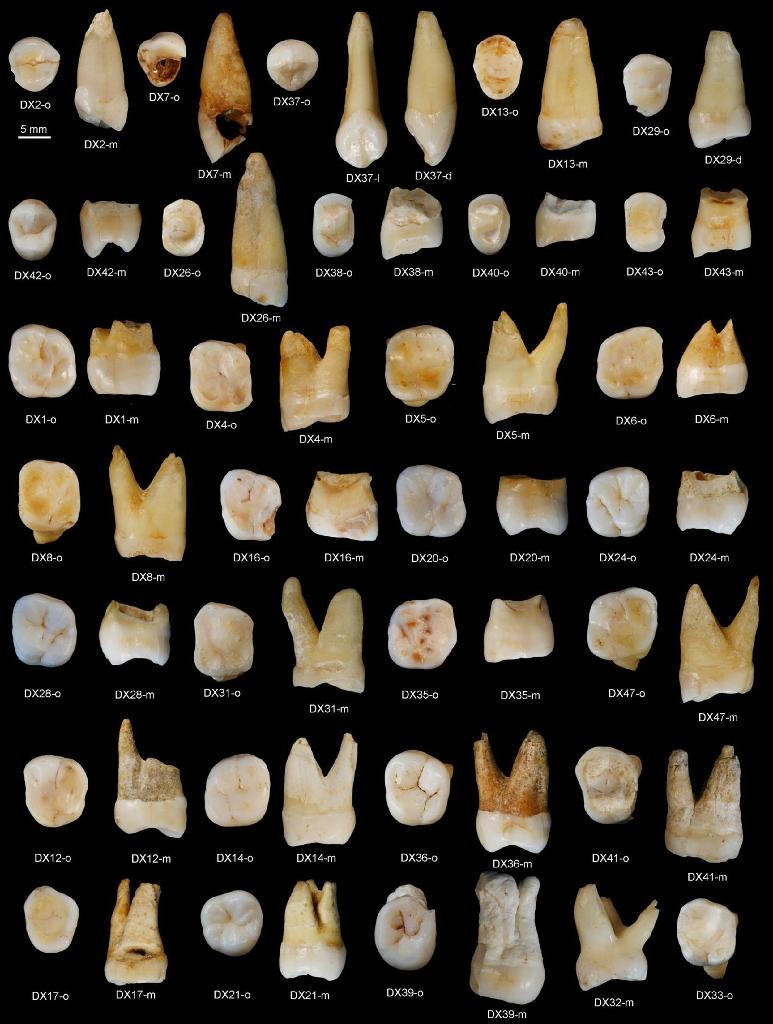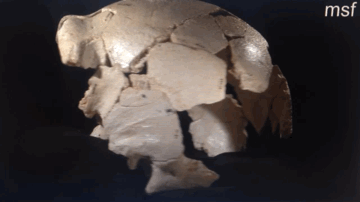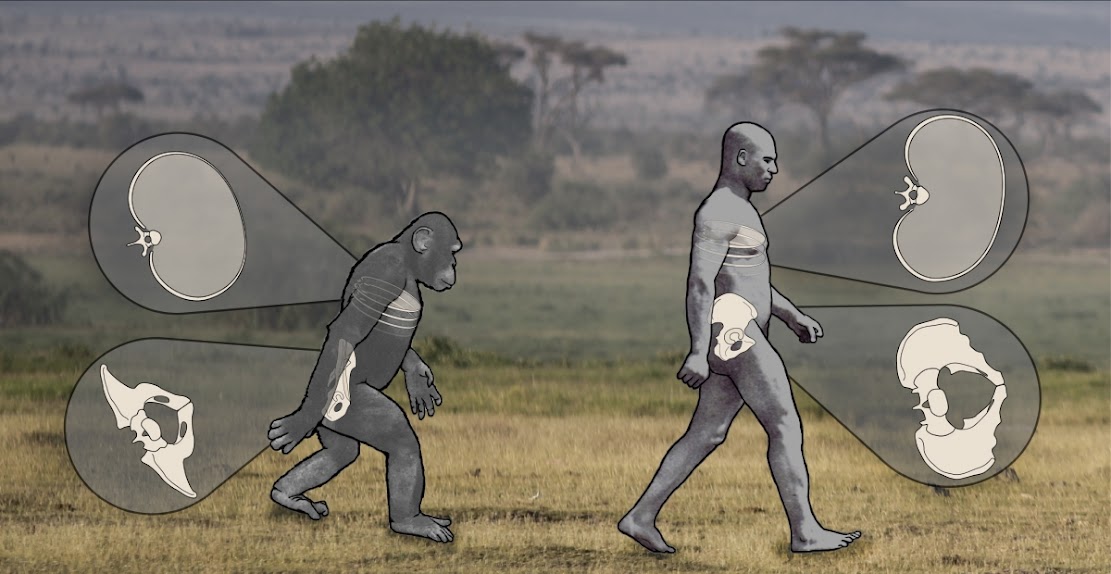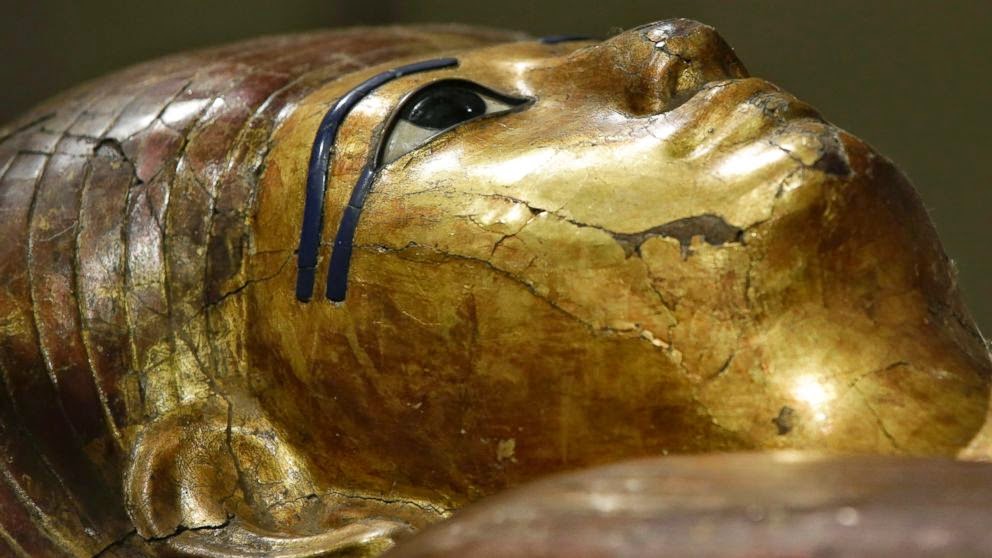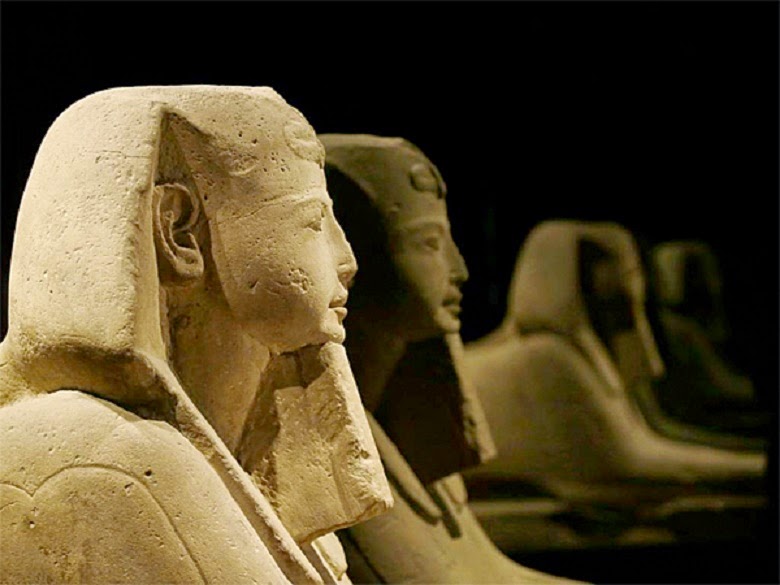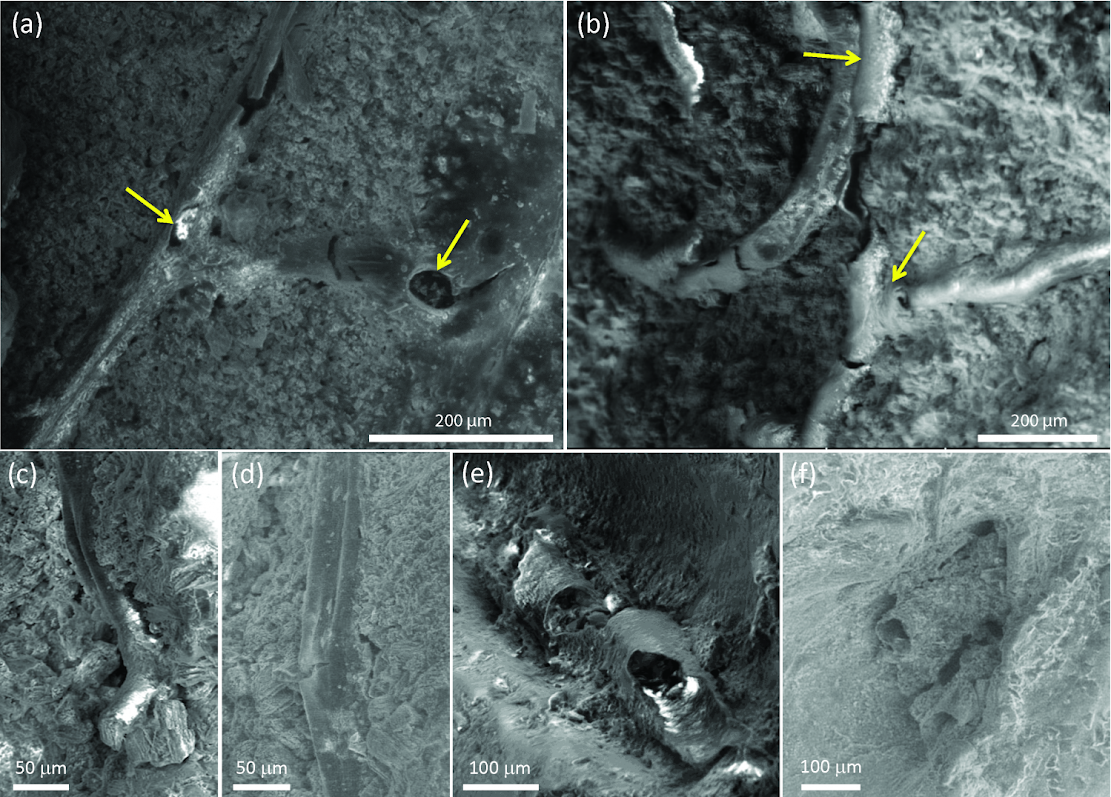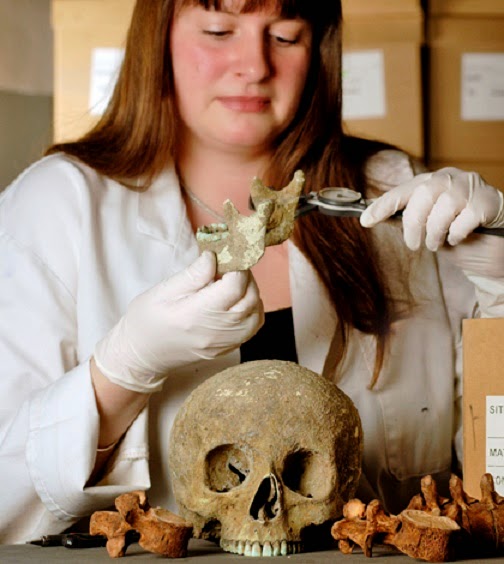On the outskirts of Beijing, a small limestone mountain named Dragon Bone Hill rises above the surrounding sprawl. Along the northern side, a path leads up to some fenced-off caves that draw 150,000 visitors each year, from schoolchildren to grey-haired pensioners. It was here, in 1929, that researchers discovered a nearly complete ancient skull that they determined was roughly half a million years old. Dubbed Peking Man, it was among the earliest human remains ever uncovered, and it helped to convince many researchers that humanity first evolved in Asia.

of human origins in China [Credit: DeAgostini/Getty]
Since then, the central importance of Peking Man has faded. Although modern dating methods put the fossil even earlier—at up to 780,000 years old—the specimen has been eclipsed by discoveries in Africa that have yielded much older remains of ancient human relatives. Such finds have cemented Africa's status as the cradle of humanity—the place from which modern humans and their predecessors spread around the globe—and relegated Asia to a kind of evolutionary cul-de-sac.
But the tale of Peking Man has haunted generations of Chinese researchers, who have struggled to understand its relationship to modern humans. "It's a story without an ending," says Wu Xinzhi, a palaeontologist at the Chinese Academy of Sciences' Institute of Vertebrate Paleontology and Paleoanthropology (IVPP) in Beijing. They wonder whether the descendants of Peking Man and fellow members of the species Homo erectus died out or evolved into a more modern species, and whether they contributed to the gene pool of China today.
Keen to get to the bottom of its people's ancestry, China has in the past decade stepped up its efforts to uncover evidence of early humans across the country. It is reanalysing old fossil finds and pouring tens of millions of dollars a year into excavations. And the government is setting up a US$1.1-million laboratory at the IVPP to extract and sequence ancient DNA.
The investment comes at a time when palaeoanthropologists across the globe are starting to pay more attention to Asian fossils and how they relate to other early hominins—creatures that are more closely related to humans than to chimps. Finds in China and other parts of Asia have made it clear that a dazzling variety of Homo species once roamed the continent. And they are challenging conventional ideas about the evolutionary history of humanity.
"Many Western scientists tend to see Asian fossils and artefacts through the prism of what was happening in Africa and Europe," says Wu. Those other continents have historically drawn more attention in studies of human evolution because of the antiquity of fossil finds there, and because they are closer to major palaeoanthropology research institutions, he says. "But it's increasingly clear that many Asian materials cannot fit into the traditional narrative of human evolution."
Chris Stringer, a palaeoanthropologist at the Natural History Museum in London, agrees. "Asia has been a forgotten continent," he says. "Its role in human evolution may have been largely under-appreciated."
Evolving story
In its typical form, the story of Homo sapiens starts in Africa. The exact details vary from one telling to another, but the key characters and events generally remain the same. And the title is always 'Out of Africa'.

In this standard view of human evolution, H. erectus first evolved there more than 2 million years ago. Then, some time before 600,000 years ago, it gave rise to a new species: Homo heidelbergensis, the oldest remains of which have been found in Ethiopia. About 400,000 years ago, some members of H. heidelbergensis left Africa and split into two branches: one ventured into the Middle East and Europe, where it evolved into Neanderthals; the other went east, where members became Denisovans—a group first discovered in Siberia in 2010. The remaining population of H. heidelbergensis in Africa eventually evolved into our own species, H. sapiens, about 200,000 years ago. Then these early humans expanded their range to Eurasia 60,000 years ago, where they replaced local hominins with a minuscule amount of interbreeding.
A hallmark of H. heidelbergensis—the potential common ancestor of Neanderthals, Denisovans and modern humans—is that individuals have a mixture of primitive and modern features. Like more archaic lineages, H. heidelbergensis has a massive brow ridge and no chin. But it also resembles H. sapiens, with its smaller teeth and bigger braincase. Most researchers have viewed H. heidelbergensis—or something similar—as a transitional form between H. erectus and H. sapiens.
Unfortunately, fossil evidence from this period, the dawn of the human race, is scarce and often ambiguous. It is the least understood episode in human evolution, says Russell Ciochon, a palaeoanthropologist at the University of Iowa in Iowa City. "But it's central to our understanding of humanity's ultimate origin."
The tale is further muddled by Chinese fossils analysed over the past four decades, which cast doubt over the linear progression from African H. erectus to modern humans. They show that, between roughly 900,000 and 125,000 years ago, east Asia was teeming with hominins endowed with features that would place them somewhere between H. erectus and H. sapiens, says Wu.
"Those fossils are a big mystery," says Ciochon. "They clearly represent more advanced species than H. erectus, but nobody knows what they are because they don't seem to fit into any categories we know."
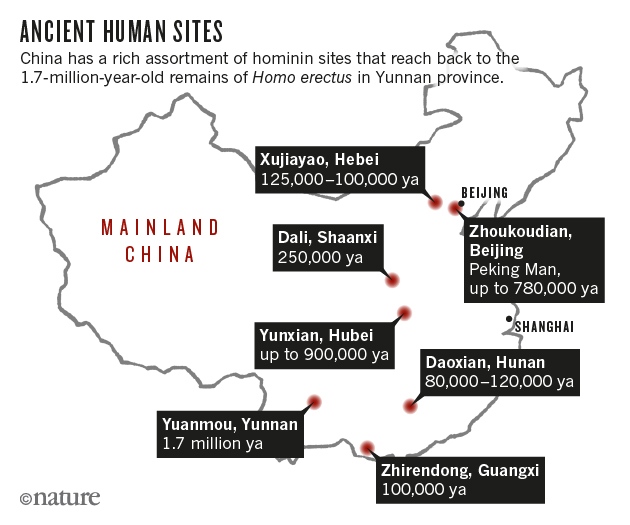
The fossils' transitional characteristics have prompted researchers such as Stringer to lump them with H. heidelbergensis. Because the oldest of these forms, two skulls uncovered in Yunxian in Hubei province, date back 900,000 years >1, 2>, Stringer even suggests that H. heidelbergensis might have originated in Asia and then spread to other continents.
But many researchers, including most Chinese palaeontologists, contend that the materials from China are different from European and African H. heidelbergensis fossils, despite some apparent similarities. One nearly complete skull unearthed at Dali in Shaanxi province and dated to 250,000 years ago, has a bigger braincase, a shorter face and a lower cheekbone than most H. heidelbergensis specimens>3, suggesting that the species was more advanced.
Such transitional forms persisted for hundreds of thousands of years in China, until species appeared with such modern traits that some researchers have classified them as H. sapiens. One of the most recent of these is represented by two teeth and a lower jawbone, dating to about 100,000 years ago, unearthed in 2007 by IVPP palaeoanthropologist Liu Wu and his colleagues>4. Discovered in Zhirendong, a cave in Guangxi province, the jaw has a classic modern-human appearance, but retains some archaic features of Peking Man, such as a more robust build and a less-protruding chin.
But the continuity-with-hybridization model is countered by overwhelming genetic data that point to Africa as the wellspring of modern humans. Studies of Chinese populations show that 97.4% of their genetic make-up is from ancestral modern humans from Africa, with the rest coming from extinct forms such as Neanderthals and Denisovans>5. "If there had been significant contributions from Chinese H. erectus, they would show up in the genetic data," says Li Hui, a population geneticist at Fudan University in Shanghai. Wu counters that the genetic contribution from archaic hominins in China could have been missed because no DNA has yet been recovered from them.

and date to 120,000–80,000 years ago [Credit: S. Xing and X-J. Wu]
Other evidence backs up this hypothesis: excavations at a cave in Daoxian in China's Hunan province have yielded 47 fossil teeth so modern-looking that they could have come from the mouths of people today. But the fossils are at least 80,000 years old, and perhaps 120,000 years old, Liu and his colleagues reported last year>6. "Those early migrants may have interbred with archaic populations along the way or in Asia, which could explain Zhirendong people's primitive traits," says Petraglia.
Maria Martinon-Torres, a palaeoanthropologist at University College London, is among those who proposed that some of the Chinese hominins were Denisovans. She worked with IVPP researchers on an analysis>7, published last year, of a fossil assemblage uncovered at Xujiayao in Hebei province—including partial jaws and nine teeth dated to 125,000–100,000 years ago. The molar teeth are massive, with very robust roots and complex grooves, reminiscent of those from Denisovans, she says.
A third idea is even more radical. It emerged when Martinon-Torres and her colleagues compared more than 5,000 fossil teeth from around the world: the team found that Eurasian specimens are more similar to each other than to African ones>8. That work and more recent interpretations of fossil skulls suggest that Eurasian hominins evolved separately from African ones for a long stretch of time. The researchers propose that the first hominins that left Africa 1.8 million years ago were the eventual source of modern humans. Their descendants mostly settled in the Middle East, where the climate was favourable, and then produced waves of transitional hominins that spread elsewhere. One Eurasian group went to Indonesia, another gave rise to Neanderthals and Denisovans, and a third ventured back into Africa and evolved into H. sapiens, which later spread throughout the world. In this model, modern humans evolved in Africa, but their immediate ancestor originated in the Middle East.
When they have, the results have been startling. In 2003, a dig on Flores island in Indonesia turned up a diminutive hominin>9, which researchers named Homo floresiensis and dubbed the hobbit. With its odd assortment of features, the creature still provokes debate about whether it is a dwarfed form of H. erectus or some more primitive lineage that made it all the way from Africa to southeast Asia and lived until as recently as 60,000 years ago. Last month, more surprises emerged from Flores, where researchers found the remains of a hobbit-like hominin in rocks about 700,000 years old>10.
Author: Jane Qiu | Source: Nature 535, 22–25 (14 July 2016) doi:10.1038/535218a [July 15, 2016]














